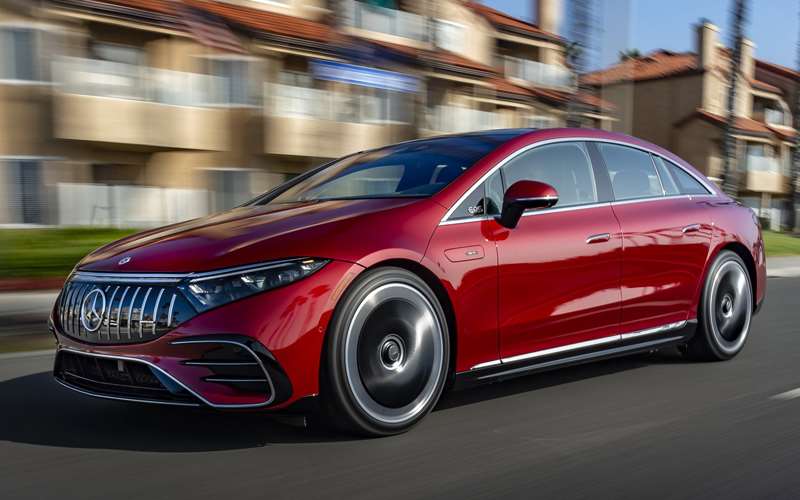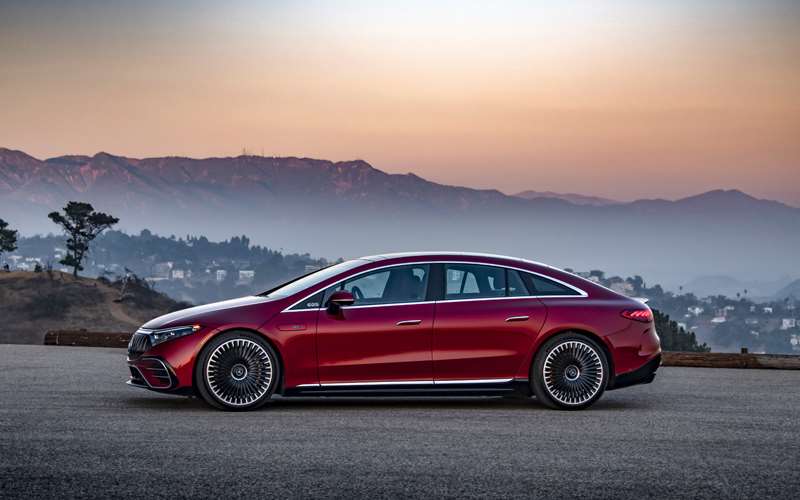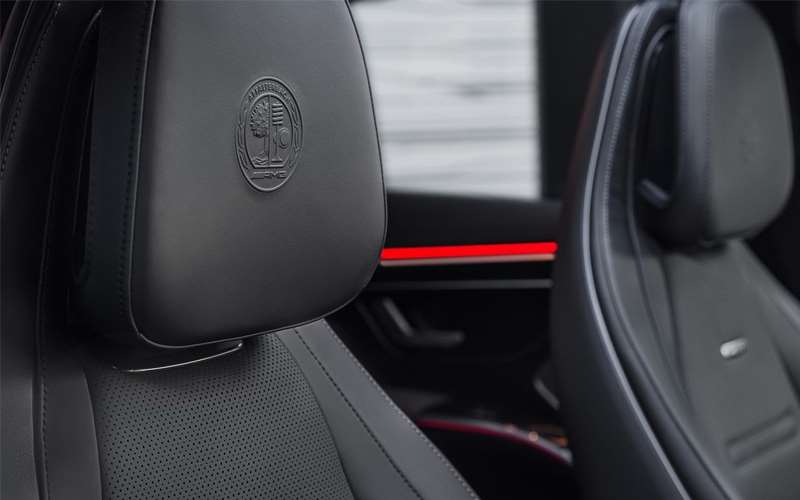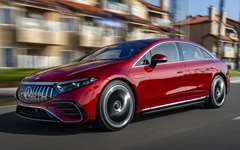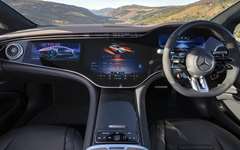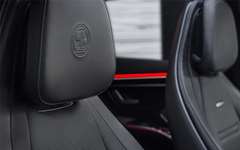The new EQS is an AMGfettled pure-electric alternative to Mercedes’ S-Class ultra-luxury saloon. Richard Bosselman has been spending time behind the wheel.
Within the electric sphere alone, the new Mercedes-AMG EQS 53 is something special; a moment in its maker’s illustrious history setting a new standard, if not wholly for technical excellence – because there are some very clever players out there – definitely for prowess in engineering, design and quality.
Does it therefore seem remarkable there’s no more compulsion to buy than pure conscience alone, given the fossil-fuelled S-Class it is to replace is still in circulation and will remain so for years to come?
It’s quite something to see the two cars together and to weigh up their pros and cons. Which will likely come down to execution of their luxury and quality of the experience. Cost of ownership? Nah. It’s a fair conclusion anyone who can buy one, can afford the other. The same might be said about feeding bill. That the EQS eats lean is nice to share; but let’s assume those into new S-Classes aren’t compelled to cut and run from petrol stations.
Really, then, the decision for this car is surely personal; determined by desire to front-foot on environmental consideration with the very latest and best, cost no barrier.
As much as life with a big battery – and the EQS packs a whopper 107.8kWh pack – demands a different approach, the future-proofed tech and feel-good of being powered by a homegrown, mainly Green energy source has a powerful impact when you’re behind the wheel. The experience of its effortlessly smashing performance, delivered with a seamlessness beyond any combustion engine drivetrain, is also massively attractive.
Sure, the battery adds considerably extra weight to a model that’s always been a hefty proposition, and its replenishment demands patience. Though the car cleverly draws as much energy as is available, in as quick a time as possible, a 400-volt system offering up to a maximum charging rate of 200kW can only do so much.
Hypercharger opportunities are to be savoured because, if you require hefty replenishment from the more common 50kWh commercial units, it’s a long involvement.
Downtime on the plug allowed opportunity to work out the interior’s apex feature, the aptly-named Hyperscreen; three touch screens in one majoring on artificial intelligence.
The driver display is a 12.3-inch screen showing all relevant driving data, the second 17.7-inch central display is for the main media, navigation and infotainment controls. The third 12.3-inch unit mounted on the passenger’s side functions primarily as an adjunct interface for the front seat passenger to use. As Mrs B wanted no part of it, I mainly had it in a dormant state, where it becomes a screen saver showing selectable artwork of the car in concept form.
The car knows when the front passenger seat is empty, anyway, and it also uses its smart logics to adapt to user behaviour in other ways, to the point of suggesting the right functions at the right times thanks to “context-sensitive awareness” with a “zero-layer” system that means users don’t have to scroll through menus and sub-menus to find the function they want. Just as well, for there are many.
The screen size reminds that everything you expect of an S is upscaled and improved upon in an EQS. ‘Out of this world’ seems such a tired cliche but, frankly, what else can you say?
Being styled so differently to an S that it almost seems to bear no relationship might seem ultra-bold. An S-class in liftback rather than sedan format is a big change too, but it works well; you’re more likely to question the snub nose, so shaped and sized because there’s no engine. It won’t seem so extrovert once the EQE and EQS SUV roll in next year.
The packaging of reasonably small electric drive units fore and aft and a big battery between them, under the floor, demands an extremely long wheelbase relative to the length of the car. Those who hold that cars of this ilk should first and foremost cater to the comforts of rear-seat passengers will be hugely satisfied. It has massive legroom in the back and, regardless of the super low and sloped roofline, decent headroom there, too. The boot offers 610 litres of space, rising to 1770 litres with the rear seats folded down.
The big benefit of it having such a large battery is in the range. The official 587km claimed is very respectable and highly believable; average energy consumption of 21.3kWh/100km from this 512km drive seemed decent, too.
The combined output of 484kW and 950Nm is significant too. Hard acceleration is what EVs do well thanks to the smooth delivery of almost instant torque. It’s not as quick off the mark as the Audi RS GT, but still seriously rapid.
The lack of an emotional combustion soundtrack? AMG’s painted itself into a corner here, because its products are famous for delivering a rich heritage of engine noise. The electric approach is to introduce synthesised noises at three levels – balanced, sport and powerful — all piped through the interior speakers as well as to the exterior of the vehicle. The most strident is certainly imposing, it has what sounds like just a little combustion rumble woven in, but it’s not the same. Mind you, it doesn’t suffer the petrol models’ constant speed drone, either.
EQS’ dynamics are greatly helped by the rear-steering axle, that can dial in as much as nine degrees of lock; enough in urban usage to emulate the turning circle of an A-Class.
Serene ride is normally a given with electrics because of the placement and weight of the batteries. EQS has adaptive air suspension and adaptive dampers, but this an AMG, so there’s a sporting bent. It’s schmoozy in the soft settings, but hit the sports tune and the sensitivity to different surfaces is evident enough to become a talking point. The nemesis is coarse chip, which introduces jitter. It’s not insufferable, but it is noticeable.
The AMG involvements, the car’s low-set stance and its weight all contribute to it being a pretty amazing thing when taken through corners at pace. Body roll doesn’t involve in Sport or Sport Plus modes and the steering then is tuned with a bent to sharpness and feedback. Slowing in a hurry isn’t an issue either, with four-piston fixed caliper brakes at the front and single-piston sliders at the back, plus up to 300kW of regenerative braking available.
It’s incredible to think this is actually AMG’s first go at a fully electric vehicle. For all that it is expensive, that it arrives at a time when the national charging infrastructure is barely ready for it and that it can be challenged by the uneven qualities of our national road surface, it nonetheless stands out as a truly remarkable feat.
Verdict
The EQS isn’t a landmark through being a true luxury car packed with leading-edge technology – Mercedes-Benz has been there, done that for years with the traditional S-Class.
Ostensibly, this is the same thing, but with batteries, because even though the looks are entirely different, both cars come off a common Sindelfingen production line. In reality? Even so, it’s surely impossible not to see the model tasked with leading its maker to and beyond 2030, the year after which it will sell only purely electric cars in Europe, is a signal of confidence from the world’s oldest car brand.
As much as electric is in our future, EQS isn’t yet a needs-must car. We can still buy petrol and those with this level of discretionary spend won’t be swayed by this new model being the cheapest AMG ever to run. They’ll be sold more on the stomp and its suaveness of that huge wallop. The lack of an old-school aural signature? It might irk, but surely not for long; There are pluses to hitting pace in silence. If there’s a flaw, it’s with the ride quality; the AMGised suspension is brittle away from smooth tarmac, coarse chip resonance impacts what should be an eerie refinement.
